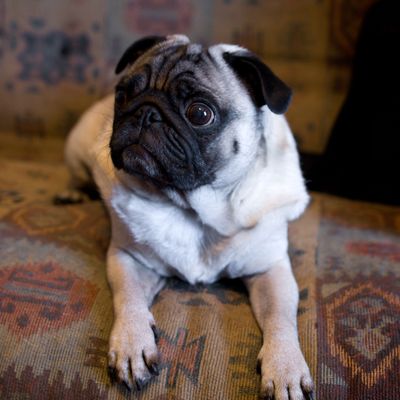
So many of the things I love, if I’m being honest with myself, are kind of funny-looking: that glittery bag that blinds my husband when I pull it out of the closet. My inexplicable attraction to Benedict Cumberbatch. My ancient pug, Tang Tang. It’s not just that I love them in spite of the fact that they’re funny-looking, though. It’s actually the opposite: I’m drawn to them because of it, because there’s something about the blend of ugly and cute that I just find so mysteriously appealing. Tang Tang is quintessentially pug — bug eyes, flat face, droopy wrinkles — which is to say, Tang Tang looks a little like an old cartoon man, or maybe a gargoyle. And I love it.
And I’m far from the only one — yes, pugs and bulldogs and their funny-looking canine brethren are widely popular, but it’s also not hard to find someone who will squeal with delight over a blobfish, a sloth, a hairless cat, or a naked mole rat. Although aesthetics like “ugly” and “cute” are subjective, a few animals are commonly considered to live in the space where the two meet — even though these are also animals with dour expressions, asymmetrical faces, and/or sunken, pale bodies. Why, then, do they seem so cuddly?
Let’s take a step back. It’s not hard to figure out why humans are drawn to cute things. The scientific name for this is baby schema: We experience an emotional pull to things with exaggerated features — like a large head, big eyes, and a round face or bodily shape — because they remind us of, well, babies. “In species whose young depend on care,” notes one study, “such bias could be adaptive and enhance offspring survival.” In other words, the way we notice, fawn over, and feel the need to care for cute, baby-shaped things is an evolutionary response that ensures our survival.
As it turns out, these ugly animals also have baby schema, meaning that we can’t help but be attracted to them even if we’re also repulsed.
Ugly-cute animals typically share many of the same exaggerated features as human babies — like the chubby form of a blobfish or the enormous eyes of a tarsier. And we respond to them emotionally, even when their features are exaggerated to the point of being grotesque.
And once we have it in our heads that something looks like a baby, we tend to extrapolate a bit on its other, nonphysical characteristics. Sharon Kinsella, a professor of Japanese studies at the University of Manchester in the U.K., says that Japanese culture has a particular obsession with all things “cute,” or kawaii — think of the characters Hello Kitty or Pikachu, both of which have big heads and plump bodies. According to Kinsella, kawaii characters also share traits like innocence, gentleness, vulnerability, and weakness — exactly like, yep, a human baby. With that in mind, it makes even more sense why we can fawn over even the ugliest creatures: No matter how gross you think a naked mole rat looks, it’s also innocent and vulnerable, too. It’s practically helpless. Awww.
Now if science can just explain my crush on Benedict Cumberbatch, I’ll be really impressed.




